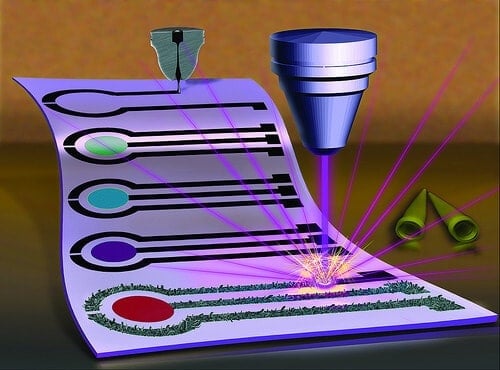When does too much of a good thing become a bad thing? That’s the question Dr. Jonathan Claussen, assistant professor at Iowa State University’s Department of Mechanical Engineering, and his team of researchers aim to help farmers answer when it comes to pesticide use. Underuse can harm farmers’ crops, while overuse can result in runoff into the soil or waterways.
Claussen and his team created a flexible, low cost and disposable biosensor that can detect pesticides in soil. This biosensor is made of graphene, a strong and stable nanoparticle, and provides instantaneous feedback, as opposed to the time and money it would otherwise take to send a sample to a lab and await results.
USDA’s National Institute of Food and Agriculture (NIFA) supported the project with an Agriculture and Food Research Initiative (AFRI) grant as part of the Nanotechnology Program.
The biosensor is made by first printing graphene ink onto paper. A laser then traces over the ink to improve its electrical conductivity by welding together flakes of the graphene ink, making a nanostructured surface that is three dimensional.
“The flakes almost look like rose petals coming up from the surface of the paper,” said Claussen. “They form the base material to test soil on.”
To do this, the biosensor is dipped into a slurry of soil and water. It is then connected to an electrochemical reader in the field to test for pesticide.
“It’s like a pH test strip,” said Claussen. Test results can help farmers quickly understand how much pesticide is needed to maintain healthy crops and minimize environmental damage. Also, results can help farmers understand where environmental remediation may be needed if pesticide overuse is evident.
The biosensor has great potential for use beyond the agriculture community. Its properties can be converted for use in the biomedical, environmental, or food safety fields, simply by changing the biological components that are immobilized on top of it.
“What fascinates me most about this project is the real world impact it can provide,” said Claussen. “The graphene sensors do not require the use of precious metals that are typically used to increase the performance of electrochemical sensors. Therefore, [this] technology really could be used by the masses for flexible/low cost electronics and sensors.”


